Edible Herbs for Groundcover in garden
Using edible herbs for groundcover is an effective way to keep soil covered and increases the productive area of the garden.
Why use groundcover plants?
Covering the soil (mulching) has several advantages. Firstly, it protects the soil against wind and water erosion and helps to reduce weeds by blocking out light, thus reducing the chance of seeds germinating.
Secondly, it can help to conserve moisture by shading the soil and reducing evaporation.
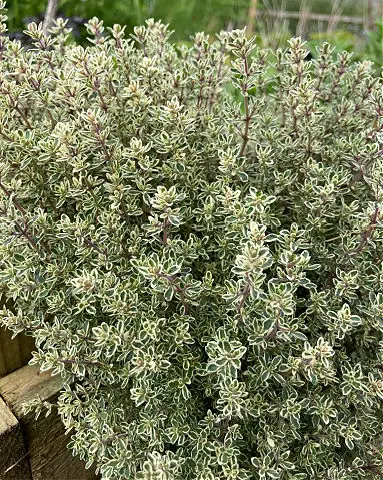
Mulches of organic material are a great way to cover the soil, but a living mulch in the form of groundcover plants often are more attractive. Low growing edible herbs can
- smother young weeds,
- provide additional sources of nectar for bees and other pollinators
- reduce water evaporation
- prevent soil erosion by wind by covering the soil
- prevent soil erosion by water as the plant roots bind the soil
- provide fresh herbs for the kitchen.
Low growing groundcover herbs
Thyme
Common thyme, Thymus vulgaris, has dark evergreen leaves and produces small pale purple flowers. There are many varieties of thyme available and all can be used as a groundcover herb, they prefer well-drained soil. A golden leaf variety is Archers Gold, which produces pink flowers. Green and yellow variegated leaf varieties are available, like Aureus AGM, which has a citrus taste. The aromatic leaves are ideal for culinary uses.
Buy as pot grown plants or propagate by seed, sow in spring and transplant in early summer, do not let young plants dry out completely in prolonged, hot weather.
Marjoram
Similar to oregano, but generally marjoram is used fresh (rather than dried) and before the flowers open. It has a delicate flavour often used in Mediterranean dishes. Dwarf origanum Origanum vulgare ‘Nanum’ is a low growing herb with a compact habit with oval green leaves and off-white flowers.
Buy as pot grown plants or propagate by seed, sow in spring and transplant in early summer, do not let young plants dry out completely in prolonged, hot weather.
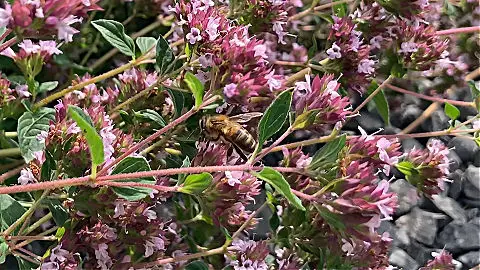
Oregano
Oregano is an evergreen groundcover herb with pungent leaves and a strong taste. It is often used in Mediterranean dishes. It thrives in a warm, sunny position and dislikes being too wet in winter. Origanum vulgare has dark-green leaves and produces pink flowers. Harvest leaves before the flowers open. Variety Aureum Crispum has golden crinkly leaves and Greek oregano Origanum vulgare subsp. hirtum ‘Greek’ is good for drying, it has bright green leaves and produces white flowers.
Mint
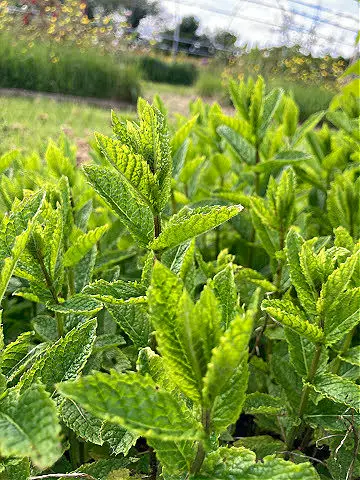
Mint, in its various forms, can be quick to cover the ground. It is a useful low growing herb, (depending on variety) that will grow n shadier areas, particularly if the soil retains some moisture. However, mint can be a bit of a thug and outgrow its allotted space rapidly. Choose a variety that grows to the height you require and with over 600 varieties of mint to choose from, you are likely to find a scent and taste that suits your purposes.
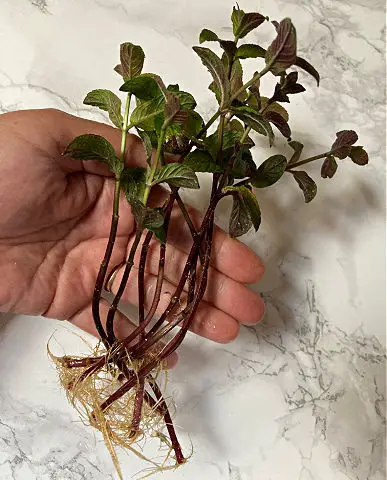
Propagate by – cuttings, which will root very easily in a jar or glass of water or lifting rooted stems from the garden or seeds
Corsican mint
Corsican mint, Mentha requienii, is a ground hugging plant with tiny, almost round leaves. It produces tiny purple flowers. Corsican mint spreads by creeping and forms mounds and fills in dips in the ground. It releases its strong mint aroma when brushed or walked on. However, it is not tough enough to withstand heavy traffic. Consider planting along the edges of borders, so you brush past it rather than crushing it. Useful as a groundcover herb in shady spots that do not dry out.
Rosemary
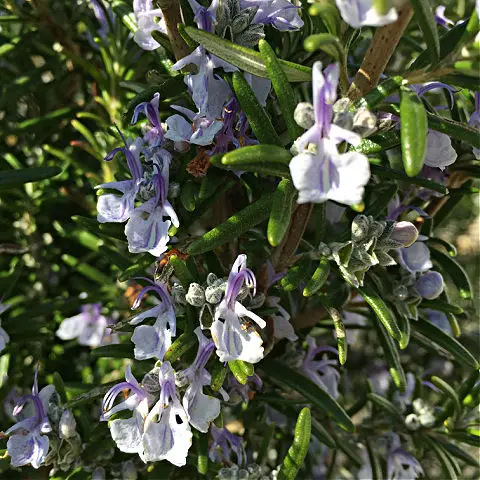
Rosmarinus officinalis ‘Prostratus Group’ is a delightful prostrate form of rosemary that grows across the ground and down the sides of low walls. It is an aromatic, woody evergreen and produces mauve flowers.
Propagate by – semi-ripe cuttings. See this video of how to take semi-ripe cuttings.
Watch out for rosemary beetle which damages leaves and stems and can kill rosemary plants if there is a heavy infestation.
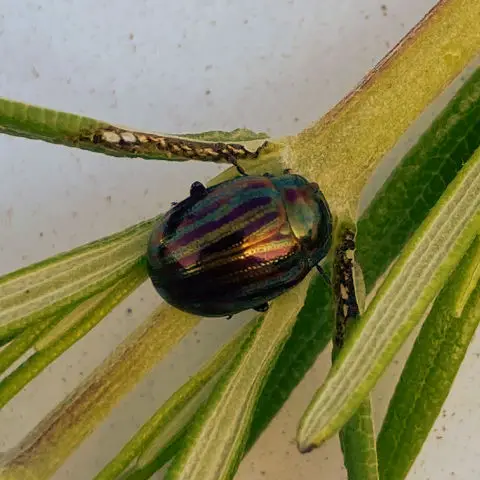
Selfheal or Heal-all
This groundcover herb divides opinion. For many it’s a nuisance weed that pops up all over the garden. For others it’s a colorful addition that attracts pollinators and provides a food source for bees.
Propagate by – seed or lifting rooted stems from the garden. Be aware that it is a prolific self-seeder and is considered an invasive plant in some regions of the world.
Where to find Groundcover Herbs
Find herb plants for sale at your local garden center, plant nursery or specialist herb farm. Or you can grow from seed.
In USA, try your regular seed supplier, like MIGardener or Seed Savers Exchange which offers heirloom, organic, Non-GMO seeds.
In UK, there are many local herb farms and Jekka’s sells a wide range of herb seeds, including some unusual varieties.
Read this article about Perennials Herbs in the Kitchen Garden.
You can also use low growing fruits like strawberries as an edible groundcover. Or you can choose groundcover plants with spring flowers.
- Autumn Groundcover - December 19, 2025
- Beautiful Bog Garden Plants - December 5, 2025
- Climbing plants for small gardens - November 21, 2025

Useful information Liz – thanks!
Super valuable ! Thank you !